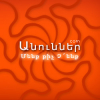Hovhannes Ghazaryan: the Perfect Chinese - The First Chinese Translator of the Bible was an Armenian

For the first time I read about this in the calendar published in Soviet times. Then, I read the brief biography of that Armenian, Hovhannes Ghazaryan, in the Biographical Dictionary of Garnik Stepanyan. Then, to find more detailed data about that person I had to do very long inquiries. It turned out that Armenian original sources possess no information about that person and English sources, published in early 19th century, are not unavailable for us. Nowadays, however, thanks to the Internet, one can read primary sources from the display of his own computer.
The first, who wrote about Hovhannes Ghazaryan, or Joannes Lassar in English, was his contemporary, Doctor Claudios Buchanan, Vice-Principal of Fort William College in Calcutta. Doctor Buchanan wrote about Ghazaryan in his <<Christian Researches in Asia>> published in 1819 in London. There were later facts about him: in the third volume of the "Chinese Collection" published in 1834 in Canton (China), which we used working on this article.
In the late 18th century, the Fort William College of English protestant missioners with support of the British East-Indian company placed the educational and scientific work on a broad footing in the town of Serampur of Bengal. A special group, Biblical brotherhood, was working at that institution with the aim to translate the Holy Book into Eastern languages. Leaders of that group wished to translate the Holy Book into Chinese and looked for a skilled person, who would not only translate, but also teach Chinese in the college. Meanwhile, in territory of Bengal of East-Indian company there was nobody, who had even elementary knowledge of Chinese. At last, after long and fruitless searches the officials of Fort William found Hovhannes Ghazaryan, a Chinese Armenian merchant.
This Armenian was born in 1778, in the Chinese town of Macao (now Aomin), which was in the Portuguese possession at that time (starting from 1557 up to 1999 Macao belonged to Portugal). Father of Hovhannes Ghazaryan was a rich merchant, originated probably from Nor Jugha. The son knew Chinese from early ages from two Christian Chinese servants: a man and a woman living at their house. He had also a good command of Armenian, English and Portuguese. Later, senior Ghazaryan brought a Chinese teacher from Canton (now, Guangzhou) for his son, who taught Hovhannes writing and reading in Chinese. After attaining his majority Hovhannes Ghazaryan started his work in Canton holding a local Portuguese office, editing official notes sent by Portuguese to the Court of Peking. Then he went into business. In 1802 24-year-old Hovhannes went to Calcutta for the purpose of commerce, where he had some difficulties. English authorities, learning about his knowledge of Chinese, invited him to work as a translator of Chinese. Subsequently, the management of the Serampore missionary institution, which was near Calcutta, particularly, above-mentioned Reverend Claudius Buchanan, found him and invited to join them. The College administration and particularly commission of the Biblical Brotherhood gave a warm welcome to Hovhannes Ghazaryan, joking, that “China came to Serampore, instead of Serampore would go to China.”
Hovhannes was offered a permanent job in Fort William College for 300 rupee a month (450 English coined gold annually) and suggested to translate the Bible into Chinese. Ghazaryan agreed to leave commercial work under those conditions. Being unable to raise necessary amount from England, college administration decided to pay Ghazaryan's salary from their own budget realizing the significance of the undertaking.
Getting down to work, the young Armenian immediately started translating the Bible. Having at hand Armenian and English editions, he translated the Gospel According to St. John beforehand. In 1805 he was translating The Book of Jubilees, the Gospel According to St. Matthew, and some chapters from both books were published. In September 1806 the rector of the Fort William College, Rev. Dr. Brown, mentioned in a letter sent to England: “Teacher Lassar has sent me three Chinese samples written with the letters of the same language, a work of his own brain and hand. Since the mentioned small pieces are produced in a rough-and-ready fashion this morning, I don't assign to view them with strict criticism, however Mr. Lassar is a perfect Chinese and he will do an excellent work by translating the Bible into that language, if God would give him five or six years of life.
He reads everything so quickly in Chinese, as you in English, as well as he writes fast."
In 1807, a copy of the Gospel of St. Matthew in the Chinese Language, translated by Mr. Lassar, and beautifully written by himself, was transmitted to his Grace the Archbishop of Canterbury, for the Lambeth Library, as the FIRST FRUITS of the Chinese Institution in Bengal. Since that period a considerable portion of the New Testament has been printed off from blocks, after the Chinese manner. Lassar's translations of the Gospels of Matthew, Luke and Mark had already been published in 1808 by the Chinese printing machine approved at the college. In the very 1808 during the annual ceremony of the Fort William College the General Steward Lord Minton expressed his approval
and praised highly three young men who could speak Chinese, as well as read and translate. In that connection, Lord Minton particularly mentioned continuous and great efforts of Joannes Lassar and his translations of the three main books of Bible.
Although untimely death of Lassar prevented him from completing the work, the fact is obvious that the first translator of the Bible into Chinese was an Armenian, whose translation has been acknowledged to be the best among Chinese translations of the Holy Book.
Old and New testaments translated by Lassar has been published in 1815-1822, in Serampore, “with metallic, moveable characters”. This is the earliest Chinese edition of the Bible, because it was finished in 1822, a year before the more well-known translation entitled "Shen-tian Sheng-shu" by Robert Morrison and William Milne. At last, being an initiative of Baptist missioners, the translation of Lassar paved the way for the Baptist translations of Bible into Chinese, which was more or less independent from the translations of other protestant preachers.
Joannes Lassar's colleague and pupil, English Sinologist and Baptist missionary Joshua Marshman (1768-1837), who had had an experience in translating the Bible into different Indian languages, assisted him in the translation work. Marshman together with his two sons and the son of Doctor Carey became first pupils of Lassar. Marshman published the first volume of the original works of Confucius in Chinese and its English translation. He and Lassar's other pupils played a notable role in exposing the Chinese culture to the West.
• ՀՈԴՎԱԾՆԵՐԸ ՄԱՍՆԱԿԻ ԿԱՄ ԱՄԲՈՂՋՈՒԹՅԱՄԲ ԱՐՏԱՏՊԵԼՈՒ ԿԱՄ ՕԳՏԱԳՈՐԾԵԼՈՒ ԴԵՊՔՈՒՄ ՀՂՈՒՄԸ www.anunner.com ԿԱՅՔԻՆ ՊԱՐՏԱԴԻՐ Է :
• ԵԹԵ ԴՈՒՔ ՈՒՆԵՔ ՍՈՒՅՆ ՀՈԴՎԱԾԸ ԼՐԱՑՆՈՂ ՀԱՎԱՍՏԻ ՏԵՂԵԿՈՒԹՅՈՒՆՆԵՐ ԵՎ
ԼՈՒՍԱՆԿԱՐՆԵՐ,ԽՆԴՐՈՒՄ ԵՆՔ ՈՒՂԱՐԿԵԼ ԴՐԱՆՔ info@anunner.com ԷԼ. ՓՈՍՏԻՆ:
• ԵԹԵ ՆԿԱՏԵԼ ԵՔ ՎՐԻՊԱԿ ԿԱՄ ԱՆՀԱՄԱՊԱՏԱՍԽԱՆՈՒԹՅՈՒՆ, ԽՆԴՐՈՒՄ ԵՆՔ ՏԵՂԵԿԱՑՆԵԼ ՄԵԶ` info@anunner.com:
| Կիսվել : |
 18:13
18:13 Սեպտեմբերի 23-ին Երևանի «Գևորգյան» ցուցասրահում տեղի ունեցավ հայազգի նկարիչ Օնիկ Սահակյանի անհատական ցուցահանդեսը: Սա այն դեպքն է, որի մասին անվերապահորեն կարելի է ասել՝ «անցավ աննախադեպ հաջողությամբ»: Ցուցադրությունը տևեց 15 օր, որի ընթացքում օրական 200-ից ավելի այցելու էր գալիս: Բերված 16 աշխատանքից յոթը վաճառվեցին (14-ը հատուկ նկարվել էր Երևան բերելու համար): Այստեղ մեծ դեր ուներ ոչ միայն պրոֆեսիոնալ գովազդը, այլև այն հանգամանքը, որ Սահակյանը եղել է Սալվադոր Դալիի մտերիմ բարեկամը և օգնականը: ...
Սեպտեմբերի 23-ին Երևանի «Գևորգյան» ցուցասրահում տեղի ունեցավ հայազգի նկարիչ Օնիկ Սահակյանի անհատական ցուցահանդեսը: Սա այն դեպքն է, որի մասին անվերապահորեն կարելի է ասել՝ «անցավ աննախադեպ հաջողությամբ»: Ցուցադրությունը տևեց 15 օր, որի ընթացքում օրական 200-ից ավելի այցելու էր գալիս: Բերված 16 աշխատանքից յոթը վաճառվեցին (14-ը հատուկ նկարվել էր Երևան բերելու համար): Այստեղ մեծ դեր ուներ ոչ միայն պրոֆեսիոնալ գովազդը, այլև այն հանգամանքը, որ Սահակյանը եղել է Սալվադոր Դալիի մտերիմ բարեկամը և օգնականը: ...
 18:10
18:10 1900 թվականին Ֆլորենցիայի եւ Փարիզի երկու հրատարակչություն լույս են ընծայել ֆրանսերեն մի գիրք՝ «Տեսություն (սոցիալական հետազոտություն)» («Considռrations (Etudes sociales)») վերնագրով, որի հեղինակը հանդես էր եկել Արմենա ծածկանվամբ: Գիրքը, որ վերաբերում էր հայկական հարցին և այդ խնդրի շուրջ եվրոպական դիվանագիտության դիրքորոշմանը, լայն արձագանք է ունեցել եվրոպացի մասնագետների շրջանում: Հեղինակին անվանել են «վեհանձն և բորբոքյալ հոգի», «հանրագիտակ»: Ֆրանսիացի քաղաքական գործիչ Ժան Ժորեսն այդ գիրքը համա...
1900 թվականին Ֆլորենցիայի եւ Փարիզի երկու հրատարակչություն լույս են ընծայել ֆրանսերեն մի գիրք՝ «Տեսություն (սոցիալական հետազոտություն)» («Considռrations (Etudes sociales)») վերնագրով, որի հեղինակը հանդես էր եկել Արմենա ծածկանվամբ: Գիրքը, որ վերաբերում էր հայկական հարցին և այդ խնդրի շուրջ եվրոպական դիվանագիտության դիրքորոշմանը, լայն արձագանք է ունեցել եվրոպացի մասնագետների շրջանում: Հեղինակին անվանել են «վեհանձն և բորբոքյալ հոգի», «հանրագիտակ»: Ֆրանսիացի քաղաքական գործիչ Ժան Ժորեսն այդ գիրքը համա...
 18:07
18:07 Երևանյան դերասանների ընտանիքում Մնջախաղի պետական թատրոնի դերասանուհի Ռուզան Հակոբյանը էականորեն տարբերվում է իր գործընկերուհիներից։ Ոչ միայն իր տարաշխարհիկ, ոչ ստանդարտ արտաքինով։ Թվում է, թե մեր դերասանուհիներից ուրիշ ոչ մեկի խաղն այնքան ենթարկված չէ պլաստիկային, որքան նրանը։ Թվում է, թե իր մարմնի շարժումներով և արտահայտիչ դիմախաղով նա ի զորու է մարմնավորել ամեն մի երևույթ։ Պլաստիկայի լեզվով կերպարի ոչ միայն արտաքինը, այլև ներքինը պատկերելու նրա ձիրքն անուրանալի է։ Երբ որ Ռուզան Հակոբյանը մարմն...
Երևանյան դերասանների ընտանիքում Մնջախաղի պետական թատրոնի դերասանուհի Ռուզան Հակոբյանը էականորեն տարբերվում է իր գործընկերուհիներից։ Ոչ միայն իր տարաշխարհիկ, ոչ ստանդարտ արտաքինով։ Թվում է, թե մեր դերասանուհիներից ուրիշ ոչ մեկի խաղն այնքան ենթարկված չէ պլաստիկային, որքան նրանը։ Թվում է, թե իր մարմնի շարժումներով և արտահայտիչ դիմախաղով նա ի զորու է մարմնավորել ամեն մի երևույթ։ Պլաստիկայի լեզվով կերպարի ոչ միայն արտաքինը, այլև ներքինը պատկերելու նրա ձիրքն անուրանալի է։ Երբ որ Ռուզան Հակոբյանը մարմն...
 17:57
17:57 Համաշխարհային թատրոնի պատմությունն ուսումնասիրելիս նկատելի է մի ուշագրավ իրողություն. 19-րդ դարի վերջին, 20-րդ դարի սկզբին մի շարք հայորդիների վիճակվել է դառնալ այս կամ այն ժողովրդի թատերական գործի ռահվիրա։ Թուրքական պրոֆեսիոնալ թատրոնի հիմնադիրներ դարձան Հակոբ Վարդովյանը և Մարտիրոս Մնակյանը, Իրանում եվրոպական տիպի առաջին ներկայացումը բեմադրեց Արմեն Օհանյանը, վրացական նոր թատրոնի հիմնադիրներից է Միխայիլ Թումանովը, ռուսական էստրադային թատրոնի հիմքը դրեց Նիկիտա Բալիևը, Մոսկվայի հրեական թատրոնինը՝ ...
Համաշխարհային թատրոնի պատմությունն ուսումնասիրելիս նկատելի է մի ուշագրավ իրողություն. 19-րդ դարի վերջին, 20-րդ դարի սկզբին մի շարք հայորդիների վիճակվել է դառնալ այս կամ այն ժողովրդի թատերական գործի ռահվիրա։ Թուրքական պրոֆեսիոնալ թատրոնի հիմնադիրներ դարձան Հակոբ Վարդովյանը և Մարտիրոս Մնակյանը, Իրանում եվրոպական տիպի առաջին ներկայացումը բեմադրեց Արմեն Օհանյանը, վրացական նոր թատրոնի հիմնադիրներից է Միխայիլ Թումանովը, ռուսական էստրադային թատրոնի հիմքը դրեց Նիկիտա Բալիևը, Մոսկվայի հրեական թատրոնինը՝ ...
 17:49
17:49 2007թ-ին Լոնդոնում լույս տեսավ Ֆրանսիայում, Անգլիայում և Ավստրալիայում աշխատած բալետի պարուհի Թամարա Չինարովա Ֆինչի «Պարելով դեպի անհայտը. իմ կյանքը «Բալե Ռյուսում» և նրանից հետո» հուշագիրքը։ Այս պարուհին չի հասել համաշխարհային ճանաչման, սակայն ապրել է հարուստ և հետաքրքրական կյանքով։ Իննսունամյակի շեմին գտնվող նախկին արվեստագիտուհու այդ չափազանց հետաքրքրական հատորն ընթերցելուց հետո նամակով կապվեցինք այսօր Իսպանիայում դստեր հետ ապրող Չինարովայի հետ. վերջինս հաճույքով թույլատրեց թարգմանել իր գր...
2007թ-ին Լոնդոնում լույս տեսավ Ֆրանսիայում, Անգլիայում և Ավստրալիայում աշխատած բալետի պարուհի Թամարա Չինարովա Ֆինչի «Պարելով դեպի անհայտը. իմ կյանքը «Բալե Ռյուսում» և նրանից հետո» հուշագիրքը։ Այս պարուհին չի հասել համաշխարհային ճանաչման, սակայն ապրել է հարուստ և հետաքրքրական կյանքով։ Իննսունամյակի շեմին գտնվող նախկին արվեստագիտուհու այդ չափազանց հետաքրքրական հատորն ընթերցելուց հետո նամակով կապվեցինք այսօր Իսպանիայում դստեր հետ ապրող Չինարովայի հետ. վերջինս հաճույքով թույլատրեց թարգմանել իր գր...













 Arian AMU
Arian AMU
